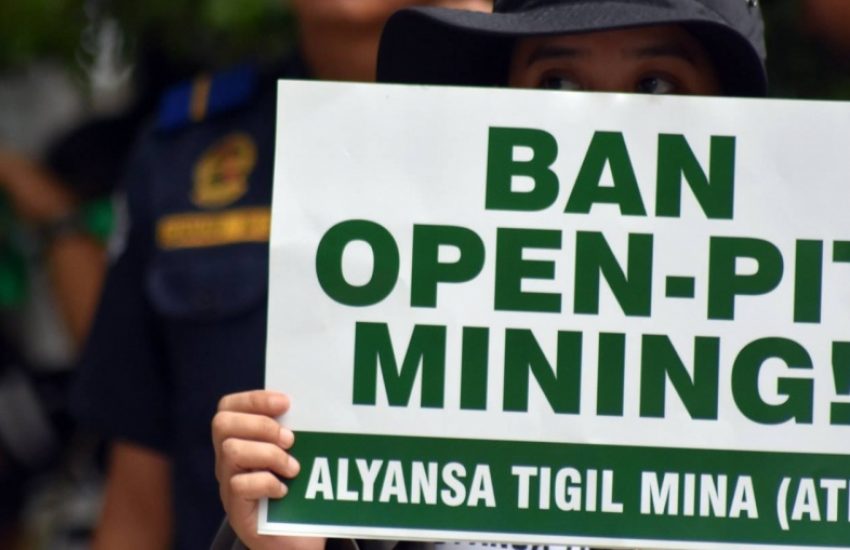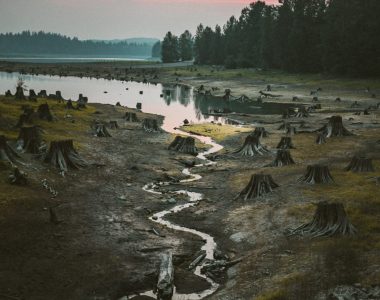This is what the economy of the Amazon…
10 July, 2024


This is what the economy of the Amazon…
10 July, 2024
Monday 31 january 2022
Header photo: Protestor holding sign calling to ban open-pit mining © ATM
In December 2021, the Philippine Department of Environment and Natural Resources (DENR) reversed the 4-year-old ban on open-pit metal mining, which was a legacy of former DENR-Secretary Gina Lopez, an environmentalist and philanthropist who passed away in 2019.
The ban on open-pit mining for copper, gold, silver and complex ores was meant to protect the Philippines’ unique biodiversity, and to prevent a repeat of major mine tailings spills that contaminated waterways in the provinces of Marinduque in 1996 and Benguet in 2012.
Mongabay reports that, according to the new order, the lifting of the ban is meant to “revitalize the mining industry and usher in significant economic benefits to the country by providing raw materials for the construction and development of other industries and by increasing employment opportunities in rural areas.”
Our partner organisations Alyansa Tigil Mina (ATM) and Legal Rights and Natural Resources Center find the lifting of the ban very worrisome.
Anti-mining coalition ATM states that “at this time when climate change brings devastating typhoons such as Odette, lifting the ban on open pit mining is a short-sighted and misplaced development priority of the government.”
The Legal Rights and Natural Resources Center (LRC) considers it a step backward in environmental protection.
Pro-mining groups are hoping the lifting of the ban will advance the controversial Tampakan project, touted as the largest undeveloped copper-gold site in Southeast Asia and among the largest in the world, although a provincial ban is still preventing the project that would displace at least 4,000 Indigenous Blaan tribespeople and clear around 3,935 ha of natural-growth, high-biodiverse forests and arable lands.
The mine is located in a critical watershed area. Once operational, it would affect and pose serious risks to the water provisioning & agriculture in central-south Mindanao. IUCN NL supports its partner organisations in the Philippines in their lobby efforts to secure the protection of these important watersheds.
ATM has also been supporting the people of Tampakan and the Bla’an indigenous communities affected by the mine. Over the past 20 years, dozens of environmental and land defenders have been killed in the struggle against the mine.


The demand for metals and minerals is growing explosively, partly triggered by the global energy transition. In many cases, the extraction of these minerals goes hand in hand with major losses of biodiversity, especially as a result of deforestation, road construction, pollution and influx of people. It thus also affects the right to a long term safe and clean environment. In addition, the sector is often linked to violence against environmental human rights and land defenders. It even was the deadliest sector for environmental defenders worldwide in 2018 (Global Witness, 2019).
Mongabay reports that the Philippines is estimated to hold mineral deposits worth at least $1 trillion, mostly copper, gold, nickel, aluminum and chromite. At least 9 million hectares of the country’s total land area of 30 million hectares are known to hold high mineral deposits. As of July 2021, nearly 764,000 hectares are covered by mining concessions.
10 July, 2024
At last year's regional summit Conversations from the Amazon, representatives of Indigenous peoples gathered in Colombia to share knowledge and…
09 July, 2024
In addition to its incredible species diversity, Madagascar provides millions of people with fresh water and other ecosystem services that…